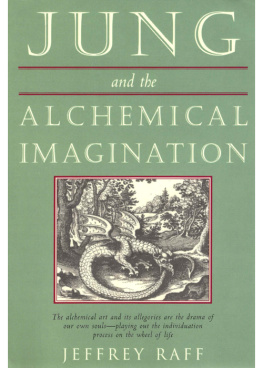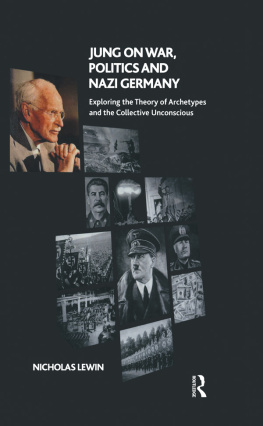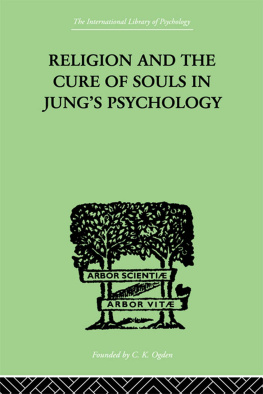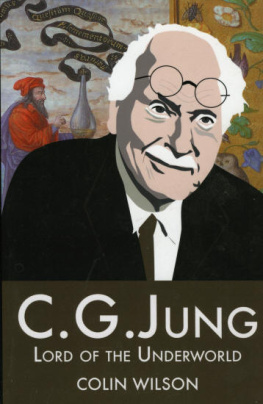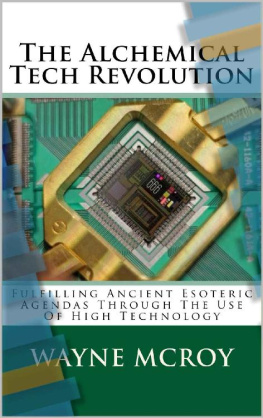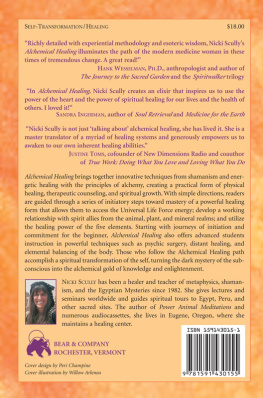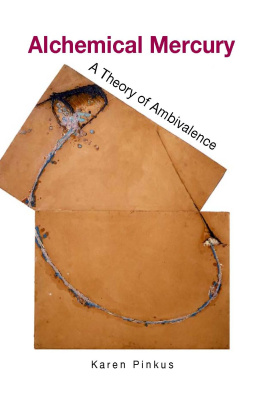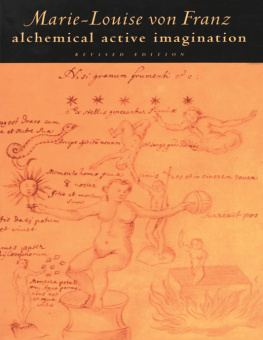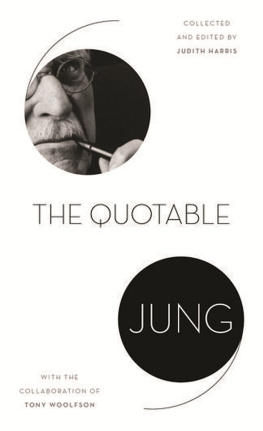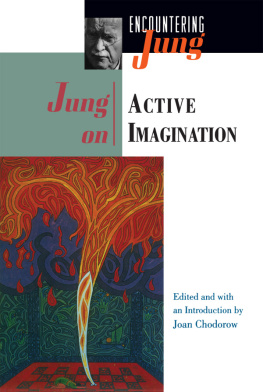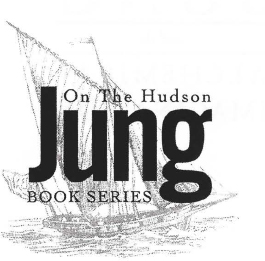
The Jung on the Hudson Book Series was instituted by The New York Center for Jungian Studies in 1997. This ongoing series is designed to present books that will be of interest to individuals of all fields, as well as mental health professionals, who are interested in exploring the relevance of the psychology and ideas of C. G. Jung to their personal lives and professional activities.
For more information about the annual Jung on the Hudson seminars, this series and the New York Center for Jungian Studies contact: Aryeh Maidenbaum, Ph.D., 27 North Chestnut St., Suite 3, New Paltz, NY 12561, telephone (845) 256-0191, fax (845) 256-0196.
For more information about becoming part of this series, contact: Nicolas-Hays, Inc., PO.Box 540206, Lake Worth, FL 33454-0206, telephone: (561) 798-1040, fax: (561) 7981042, email: .

First published in 2000 by
Nicolas-Hays, Inc.
P.O. Box 540206
Lake Worth, FL 33454-0206
www.nicolashays.com
Distributed to the trade by
Red Wheel/Weiser, LLC
Box 612
York Beach, ME 03910
www.redwheelweiser.com
Copyright 2000 Jeffrey Raff
All rights reserved. No part of this publication may be reproduced or transmitted in any form or by any means, electronic or mechanical, including photocopying, recording, or by any information storage and retrieval system, without permission in writing from Nicolas-Hays, Inc. Reviewers may quote brief passages.
Library of Congress Cataloging-in-Publication Data
Raff, Jeffrey.
Jung and the alchemical imagination / Jeffrey Raff.
p. cm.
Includes bibliographical references and index.
ISBN 0-89254-045-1 (pbk.: alk. paper)
1. Jungian psychology. 2. AlchemyPsychological aspects. 3. Jung, C. G. (Carl Gustav), 18751961. I. Title.
BF173.R18 2000
150.1954dc21
00040194
EB
The author gratefully acknowledges Princeton University Press for giving him permission to quote material from the following titles: Jung, C. G., Psychology and Alchemy Copyright 1953 by Bollingen Foundation, New York, NY; 1968 Bollingen Foundation, Reprinted by permission of Princeton University Press; Jung, C. G., Alchemical Studies Copyright 1967 by Bollingen Foundation, Princeton University Press, Reprinted by permission of Princeton University Press; Jung, C. G., Mysterium Coniunctionis Copyright 1970 by Bollingen Foundation, Princeton University Press, Reprinted by permission of Princeton University Press.
Cover design by Kathryn Sky-Peck
Typeset in 12/14 Centaur MT
Printed in the United States of America
8 7 6 5 4 3
The paper used in this publication meets the minimum requirements of the American National Standard for Information SciencesPermanence of Paper for Printed Library Materials Z39.481992 (R1997).
www.redwheelweiser.com
www.redwheelweiser.com/newsletter
CONTENTS

ACKNOWLEDGMENTS
I would like to thank those individuals whose writing skills helped me through the difficult challenge of learning to put my ideas on paper and whose comments helped make this book far better than it would otherwise have been: Lydia Lennihan and Gary Hartman. My thanks to Steve Wong for getting me into writing, and to Linda Vocatura lor helping me shape many ideas that appear in this work. I wish also to thank Kay Galvan for her help with the book. And my special thanks to my wife Marilyn for her patient support through the hard work and discouraging moments that accompanied this creative process and for being partner in the alchemy of relationship.
INTRODUCTION
When I was 22 years old, I experienced a spiritual awakening. Long before I ever heard of either C. G. Jung, or alchemy, a spiritual current raced through my soul and summoned me to experiences I had never imagined could exist. I was young and very ignorant, and had no way to conceptualize the experiences that I was undergoing. In my need to comprehend, I sought teachers and traditions that might help me to understand. I found noneuntil I came upon the writings of C. G. Jung. Though his ideas, and the complexity of his writings puzzled me, in my heart I knew I had found a kindred spirit. I could sense, long before I could understand, that Jung provided the framework in which I could decipher the visions that I experienced.
My study of Jung introduced me to earlier traditions that also spoke to my depths. Of these, the most important was alchemy. For me, alchemy was a vast cauldron of image and symbol, a chaotic mixture of the reasonable and the bizarre, the endearing and the terrifying. At the core of it all stood the fascinating image of the philosopher's stone, the magical substance with the power to transmute metals, heal the sick, reveal the mysteries of the spirit, and bestow immortality on its fortunate creator. It was the image of the stone, more than any other, that captured my imagination and moved me to the study of alchemya study that has continued for over twenty years.
Originally I did not seek intellectual understanding about the origins of alchemy, nor did I wish to get into the minds of the early alchemists to deduce what they might have intended in their writings. Rather, it was the symbols that they created and the imagery that they used that held my attention. I felt that if I could understand the meaning of these symbols I would gain insight into my own experiences, and the experiences that clients shared with me. I am, I suppose, a mystic. I have never been at home in organized religion, but have had to find my own path and decipher my own truths. Without either Jung or alchemy, though, my efforts would have failed.
I have continued my exploration of the inner world for over thirty years. And I still find in the symbolic language of alchemy much that is useful in understanding the inner terrain. In writing this book, it is my intention to share the keys to understanding that alchemy presents and to unlock some of the secrets of the inner world. I make no claim to being definitive, nor do I presume to argue that my understanding is the only one possible. However, I do believe that the combination of my own inner experience and my work with many others in analysis creates a unique perspective on the spiritual dimensions of alchemy, which in turn illumines the spiritual path of individuation.
There can be no hope of understanding my perspective on alchemy without considering the Jungian model that serves as my starting point. For this reason, I touch on some of the basic ideas of Jungian theory such as the self, active imagination, dream interpretation, and the transcendent function. My approach to these concepts is not that of a theoretician attempting to explicate Jung's theoretical constructs. I approach Jung as if he were an alchemist, the latest in a long tradition of spiritual teachers. For purposes of this book, I am not interested in Jung in his entirety, but only in those aspects of his work that clarify the spiritual meaning of alchemical symbols. In other words, I explore alchemical images to understand inner experience, and I explore Jung to understand the alchemical images. The reverse holds true as well. Understanding inner experiences sheds light on the meaning of alchemical images that, in turn, amplify the concepts that Jung formulated.
There are some who might object to this view of Jung, who might question his role as a spiritual teacher or as an inner alchemist. In my opinion, however, Jung's most important contribution was not that of a practicing psychologist, but of a teacher to the world, of one who reintroduced the wisdom of many ancient traditions into the contemporary Western world. Indeed, Jung was not a practicing alchemist, but he recognized and honored the alchemical imagination, the imaginative world in which many alchemists lived and worked. In the alchemical imagination, the world may be perfected, disease vanquished, matter transformed into spirit, and spirit into matter. In the imaginative universe, the opposites unite, creating a magical third, which transcends ordinary consciousness. Fundamentally, Jung's commitment to the processes of transformation and the creation of a new psychic center, which he termed the self, place him in the imaginative world of the alchemist.
Next page
